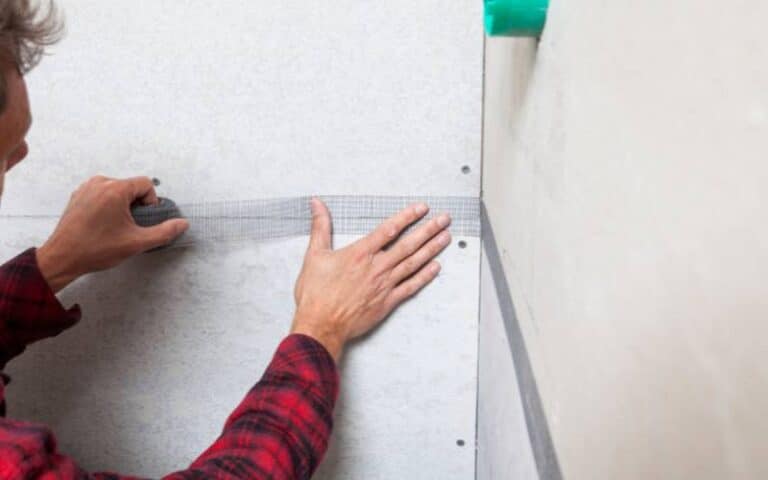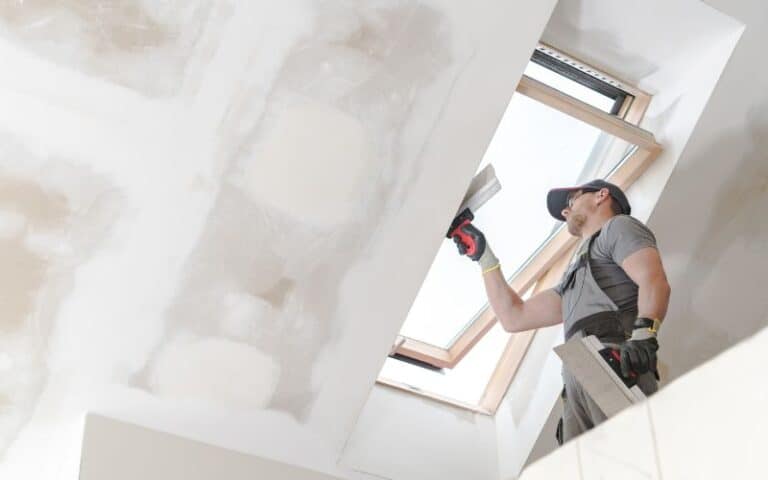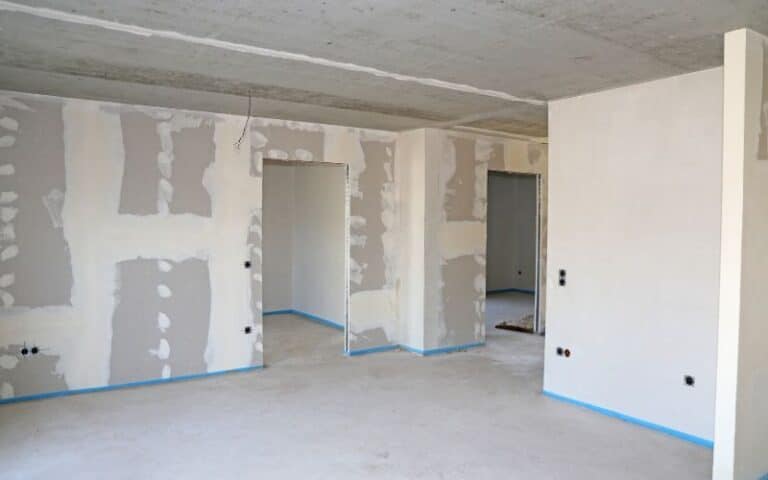When placing your tiles on the wall, floor, or even in places like the kitchen cabinet or bathroom sink, they’re some do’s and don’ts.
These are associated with using thinset on the floor, wall, or any other part of the house.
If you do not use the thinset on the wall accordingly, you might have your tiles cracking or even the tiles falling off the wall.
You can use thinset on drywall. However, before using a thinset on dry walls, there are many things you should consider before applying your thinset on any drywall or even wooden surface. First, scrubbing the walls is essential to enable the thinset to hold appropriately to the drywall and avoid your tiles falling off.
Scrubbing the walls can also be called sand. It is done using sandpaper or any other material that can easily scrub off the upper layer of the floor or wall.
This article covers everything you need to know about using thinset on drywall.
Ready for a Drywall Quiz?
Can Thinset be Used on Drywall?
Yes, thinset, one of the best adhesives for tiles, can be used very well, even on dry walls in your home.
However, you can only apply thinset on the drywall without having to take some other necessary measures.
Below are the necessary procedures you must do before applying thinset on drywall.
- Remove any form of pins, nails, or any other foreign objects on the wall
- Scrub or remove any remaining plaster or paint on the wall
- If any lump or residual materials are on the wall, remove it
- Locate any holes in the walls
- Cover up the holes or spaces or cracks on the wall with plaster, or any other fitting material
- Make sure you allow this new plaster to dry off properly
- Use sandpaper for sanding the wall to a flat level
- You can use any object to check if the wall is not smooth
- If it is not smooth, then you can smoothen it once more with the sandpaper
- Use a cloth to clean up the residual dust or dirt on the wall
- If there is any form of freeze, make sure to wipe it off
- Allow the wall to dry up properly
- Before applying the thinset on the wall, clean up the wall again
- Then you can apply your thinset
- You can now place your tiles on the thinset and wait for it to dry
- Your thinset and tiles are ready.
When applying the thinset, make sure you apply it evenly to avoid the tiles falling off the wall, cracks on the tiles, or any other issues that may come up soon.
If the wall is too smooth or there is residual paint on the wall, the adhesive might fail to stick on the wall, and sooner or later, your tiles might fall off the wall.
So it is better to avoid it from falling off than take shortcuts in fixing your thinset on your wall.
Does Thinset Mortar Stick to Drywall?
Thinset mortar is one of the best adhesives to use for tiles in your home.
This thinset mortar sticks very well to drywalls and can make an excellent adhesive for your drywalls.
However, the thinset takes longer to set than the mastic adhesive, another suitable adhesive used for tile placing.
Before applying thinset to drywall
- Remove any residual material or paint on the drywall
- Clean the wall
- You can wash the wall to remove any grease materials on them
- Allow the wall to dry
- You can start applying your thinset
After applying your thinset on drywall, the long setting duration allows you to adjust any mistakes made while placing tiles.
When used on floors, there is slight sagging ( the tiles moving out of their place or shifting from their location.
But when used on the wall, there is a high possibility of sagging the tiles, which is a significant problem using thinset on the wall.
However, in the case of sagging tiles on the wall, some plastic tile spacers can be used to space the tiles to avoid sagging appropriately.
The long time it takes before setting it in place makes the tiles on the wall sag more quickly than on the floor.
Thinset colors
#1. White
It is for light tiles. Tiles with light colors tend to match the white color.
It is necessary, so the adhesive on the tiles will be obscure even if everyone knows these adhesives are for tiles. Moreover, it presents a neater job.
#2. Grey
For dark-colored tiles, the grey color thin-set mortar is used as adhesive.
A white adhesive on dark-colored tiles will appear more noticeable, and the tiles will not look attractive when the adhesive matches the tile color.
You can use the thinset mortar for drywalls and areas exposed to much water or moisture.
When using thinset for damp areas, it is preferable to use water-resistant thinset to avoid the tiles falling off due to too much exposure to moisture.
A few places are best for using the thinset mortar adhesive for placing tiles.
- The floor of the kitchen
- Walls of the kitchen
- Bathroom floors
- Walls of the bathroom
- Counterparts in the kitchen
- any floor in the house
If the surface for placing the tiles is clean and free from any form of grease, the tiles will last a very long time.
But the tiles will not last if the surface has any of the following
- If it is wet
- Has a lump
- Is very sloppy
- Had any oily substance on them
- Does not have enough adhesive
Below are the differences between thinset mortar and tile mastic, a competitor of the thinset and is also an alternative
| Thinset mortar | Mastic |
|---|---|
| It takes a longer time to set | It takes a shorter time to set |
| Maximum tile sagging | Minimum tile sagging |
| You can use it for areas submerged in water, e.g. swimming pool | You cannot use it in areas submerged in water |
| For use in both damp and dry areas | For use in damp areas only |
What Do You Put on Drywall Before Tiling?
You cannot place a tile directly on drywall. It will not stick and will fall off immediately after you let go. Before placing a tile on the wall, you need some adhesive.
Adhesives are materials with cement, sand, water, and other substances used to hold tiles in place on walls, floors, or other parts of the house.
This set is one of the best adhesives when placing your tiles in the kitchen, bathroom, sitting room, and even the laundry room.
It would help if you cleaned up the walls and ensured you do away with any firmer paint or plaster on the walls for the adhesive to stick very well.
The thinset doesn’t stick well to very smooth surfaces; if applied on a smooth surface, the tiles will fall off sooner or later.
The thinset can also be of use on wooden walls or floors. It would help if you sanded it using sandpaper to provide a conducive surface for the adhesive.
The amount of thinset needed depends on the surface type and the design pattern.
If you’re gou6fir a more complicated pattern of design using your tiles, you have to get more thinset than when you have a plain pattern design.
If you’re using it on a wooden surface, you need more thinset than when you want to use it on a concrete surface.
Cemented surfaces are not very conducive for adhesives because of their smooth nature. So you will have to break it off to have a rough surda6for application of your thinset adhesive.
Below are some of the materials needed for tiling a floor, wall, or any part of the house
- Water
- Gloves
- Protective glasses
- Mask(to prevent inhalation of dust)
- Cloth, sponge, or rags
- Sandpaper
- Tile cutter
- Trisodium Phosphate
Trisodium Phosphate is used to clean grease or any oily substance on the wall. It melts them away for easy cleaning.
The tile cutter is also essential for shaping the tiles or cutting them to the desired sizes that will be fit for use.
These items are helpful in their unique way, so improvising can improve your outcome if it works out.
What is the Difference Between Thinset and Mortar?
Though thinset and mortar are used as synonyms for each other, there are still some notable differences between the two of them.
But they are sometimes preferably used together as one word(thin-set mortar) or as synonyms, making it look like they are the same.
Even if they are not the same, they have a little difference that is hardly noticeable or noted.
Below are the differences between thinset and mortar
| Thinset | Mortar |
|---|---|
| Thick | Very thick compared to thinset |
| Are used for adhering tiles | It can be used for bricks, blocks, or tiles |
| High moisture-retaining agent | Low moisture-retaining agent |






